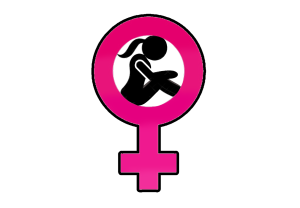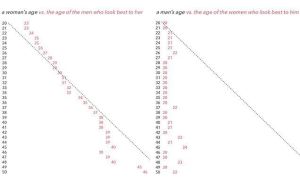Main Page: Difference between revisions
No edit summary |
No edit summary Tags: Mobile edit Mobile web edit Visual edit |
||
| (57 intermediate revisions by 2 users not shown) | |||
| Line 2: | Line 2: | ||
| rowspan="2" | | | rowspan="2" | | ||
| style="font-size:25px; color:white;" | '''Welcome to the Femcels Wiki!''' | | style="font-size:25px; color:white;" | '''Welcome to the Femcels Wiki!''' | ||
<div style="flex-grow:1; -webkit-flex-grow:1; -ms-flex-grow:1; padding: 15px 3px;">[[File:Logo.png|center|300px|]]</div> | |||
| | | rowspan="1" | | ||
| | | | | '''''A wiki about Female Involuntary Celibates''''' | ||
| | '''''A wiki about Female Involuntary Celibates''''' | [https://femcels.wiki/index.php?title=Special:CreateAccount Create an Account]<br> | ||
[[Special:AllPages|{{NUMBEROFARTICLES}}]] articles | |||
[[Special:RecentChanges|{{NUMBEROFEDITS}}]] edits<br /> | |||
Wiki created by: [[User:LoneVixen|LoneVixen]] | |||
|} | |} | ||
| Line 15: | Line 18: | ||
</tr> | </tr> | ||
<tr> | <tr> | ||
<td style="border-bottom: 10px solid #FFF;padding: 11px 20px;" valign="top" bgcolor="# | <td style="border-bottom: 10px solid #FFF;padding: 11px 20px;" valign="top" bgcolor="#fce0e8"> | ||
''' | A '''[[Femcel]]''' is a sociological term referring to an involuntary celibate that is specifically directed toward [[Woman|women]]. Historically, the concept of involuntary celibacy has largely focused on the male experience, leaving women’s experiences largely dismissed.<ref>Marwick, Alice E. ''Instafame: Luxury selfies in the attention economy''. Public Culture, 27(1), 137–160 (2015).</ref> As a result, there is a need for a specific term to address the unique challenges and experiences that women face when it comes to involuntary celibacy. | ||
It | Femcels are often mischaracterized as [[Fakecel|Fakecels]]. It is a common misconception that they are [[Misandry|misandrists]] or attention seeking, however, the reality is more complex. Femcels are often considered repulsive or unattractive by men, leaving them ‘non-existent’ as males tend to overlook and ignore non-physically appealing women.<ref>Chou, H. T. G., & Edge, N. "They are happier and having better lives than I am": The impact of using Facebook on perceptions of others' lives. Cyberpsychology, Behavior, and Social Networking 15.2 (2012): 117–121.</ref> | ||
It is a common misconception that all women can easily find sexual partners because men have ‘no standards’ when it comes to intercourse. However, this overlooks a critical truth: many men lack the knowledge of how to properly pleasure a woman, as their focus tends to be on their own satisfaction rather than mutual pleasure.<ref>Hite, Shere. ''The Hite Report: A Nationwide Study on Female Sexuality''. Macmillan, 1976.</ref> This dynamic leads to many women experiencing sexual encounters that are unsatisfactory. | |||
[[File:Moidsarepedos.jpg|Male hypergamy ☕️|thumb]] | |||
Society frequently pushes women into unrealistic beauty standards from an early age, with girls often being encouraged to wear makeup and conform to conventional ideals of beauty starting at ages as young as 11.<ref>Tiggemann, Marika, and Isabella Anderberg. "Social media is not real: The effect of ‘Instagram vs reality’ images on women’s social comparison and body image." New Media & Society 22.12 (2020): 2183–2199.</ref> This relentless pressure to be "perfect" and constantly attractive creates an environment where women are seen as commodities to be judged based on their appearance rather than their worth as people.<ref>Wolf, Naomi. ''The Beauty Myth''. HarperCollins, 1990.</ref> | |||
<span style="font-size:70%">References above: Marwick 2015, Ging 2019, Chou & Edge 2012, Hite 1976, Tiggemann & Anderberg 2020, Wolf 1990</span> | |||
</td> | |||
</tr> | |||
</table> | |||
<div style="overflow-x:auto;"> | |||
<table width="100%" cellspacing="2" cellpadding="3" border="0"> | |||
<tr style="border-top: 10px solid #FFF" bgcolor="#f76f96"> | |||
<td style="border-right: 10px solid #FFF;text-align:center" width="50%"><font color="#ffffff"><b>Core Concepts</b></font></td> | |||
<td style="text-align:center"><font color="#ffffff"><b>Learning About Moids</b></font></td> | |||
</tr> | |||
<tr bgcolor="#fce0e8"> | |||
<td style="border-right: 10px solid #FFF;border-bottom: 10px solid #FFF" valign="top"> | |||
*[[Femcel]] | |||
*[[Woman]] | |||
*[[Makeup]] | |||
*[[Misogyny]] | |||
*[[Loneliness]] | |||
*[[Virginity]] | |||
</td> | |||
<td style="border-bottom: 10px solid #FFF" valign="top"> | |||
*[[Chad]] | |||
*[[Skank]] | |||
*[[Moid]] | |||
*[[Incel]] | |||
*[[Misandry]] | |||
*[[Spermoid]] | |||
*[[Sexpiration date]] | |||
*[[Ideal man]] | |||
</td> | |||
</tr> | |||
<tr style="border-top: 10px solid #FFF" bgcolor="#f76f96"> | |||
<td style="text-align:center;border-right: 10px solid #FFF"><font color="#ffffff"><b>Internet Culture</b></font></td> | |||
<td style="text-align:center"><font color="#ffffff"><b>Femcel Discourse</b></font></td> | |||
</tr> | |||
<tr bgcolor="#fce0e8"> | |||
<td style="border-bottom: 10px solid #FFF; border-right: 10px solid #FFF" valign="top"> | |||
*[[Reddit]] | |||
*[[TikTok]] | |||
*[[4chan]] | |||
*[[Twitter]] | |||
*[[Forums]] | |||
*[[R/malesuffering]] (rip) | |||
</td> | |||
<td style="border-bottom: 10px solid #FFF" valign="top"> | |||
*[[Beauty Standards]] | |||
*[[Hypergamy]] | |||
*[[Dating Culture]] | |||
*[[Online Validation]] | |||
*[[Pick Me Girl]] | |||
</td> | |||
</tr> | |||
</table> | |||
</div> | |||
<div style="overflow-x:auto;"> | |||
<table width="100%" cellspacing="2" cellpadding="3" border="0"> | |||
<tr style="border-top: 10px solid #FFF" bgcolor="#f76f96"> | |||
<td colspan="3" style="text-align:center"><font color="#ffffff"><b>Femcels.wiki Essentials</b></font></td> | |||
</tr> | |||
<tr bgcolor="#fce0e8"> | |||
<td style="border-right: 10px solid #FFF; text-align:center; border-bottom: 10px solid #FFF" valign="top"> | |||
[[Femcels Wiki:Terms of Use|'''Terms of Use''']] | |||
Learn the basic rules of using this site. | |||
</td> | |||
<td style="border-right: 10px solid #FFF; text-align:center; border-bottom: 10px solid #FFF" valign="top"> | |||
[[Femcels Wiki:Rules|''' Rules''']] | |||
Community guidelines and editing standards. | |||
</td> | |||
<td style="text-align:center; border-bottom: 10px solid #FFF" valign="top"> | |||
[[Femcels Wiki:How to contribute|'''How to Contribute''']] | |||
Tutorial on creating pages and uploading images. | |||
</td> | </td> | ||
</tr> | </tr> | ||
</table> | </table> | ||
</div> | </div> | ||
<div style="font-size:50%"> | |||
<references /> | |||
</div> | </div> | ||
Latest revision as of 16:27, 29 August 2025
| Welcome to the Femcels Wiki! | A wiki about Female Involuntary Celibates
Create an Account |
| What is a Femcel? |
|---|
|
A Femcel is a sociological term referring to an involuntary celibate that is specifically directed toward women. Historically, the concept of involuntary celibacy has largely focused on the male experience, leaving women’s experiences largely dismissed.[1] As a result, there is a need for a specific term to address the unique challenges and experiences that women face when it comes to involuntary celibacy. Femcels are often mischaracterized as Fakecels. It is a common misconception that they are misandrists or attention seeking, however, the reality is more complex. Femcels are often considered repulsive or unattractive by men, leaving them ‘non-existent’ as males tend to overlook and ignore non-physically appealing women.[2] It is a common misconception that all women can easily find sexual partners because men have ‘no standards’ when it comes to intercourse. However, this overlooks a critical truth: many men lack the knowledge of how to properly pleasure a woman, as their focus tends to be on their own satisfaction rather than mutual pleasure.[3] This dynamic leads to many women experiencing sexual encounters that are unsatisfactory. Society frequently pushes women into unrealistic beauty standards from an early age, with girls often being encouraged to wear makeup and conform to conventional ideals of beauty starting at ages as young as 11.[4] This relentless pressure to be "perfect" and constantly attractive creates an environment where women are seen as commodities to be judged based on their appearance rather than their worth as people.[5] References above: Marwick 2015, Ging 2019, Chou & Edge 2012, Hite 1976, Tiggemann & Anderberg 2020, Wolf 1990 |
| Core Concepts | Learning About Moids |
| Internet Culture | Femcel Discourse |
| Femcels.wiki Essentials | ||
|
Terms of Use Learn the basic rules of using this site. |
Rules Community guidelines and editing standards. |
How to Contribute Tutorial on creating pages and uploading images. |
- ↑ Marwick, Alice E. Instafame: Luxury selfies in the attention economy. Public Culture, 27(1), 137–160 (2015).
- ↑ Chou, H. T. G., & Edge, N. "They are happier and having better lives than I am": The impact of using Facebook on perceptions of others' lives. Cyberpsychology, Behavior, and Social Networking 15.2 (2012): 117–121.
- ↑ Hite, Shere. The Hite Report: A Nationwide Study on Female Sexuality. Macmillan, 1976.
- ↑ Tiggemann, Marika, and Isabella Anderberg. "Social media is not real: The effect of ‘Instagram vs reality’ images on women’s social comparison and body image." New Media & Society 22.12 (2020): 2183–2199.
- ↑ Wolf, Naomi. The Beauty Myth. HarperCollins, 1990.

